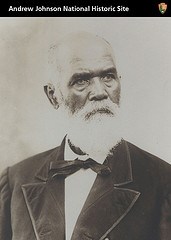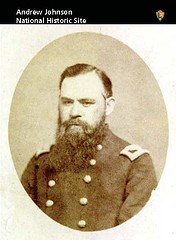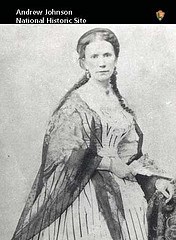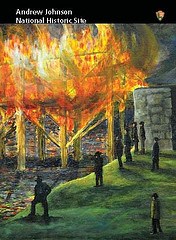|
The Andrew Johnson National Historic Site's trading cards marked the 150th anniversary of the Civil War and tell stories from the Civil War to Civil Rights. These cards continue to be an active part of the site's Junior Ranger program. Ask a Ranger or Volunteer at the Visitor Center for more information. 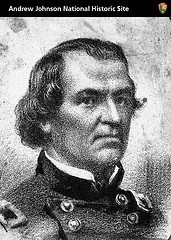
Military Governor of Tennessee NPS Andrew JohnsonBrevet Brigadier General Before becoming president, Andrew Johnson served as Military Governor of Tennessee during the Civil War. From 1862-1865 he reestablished a Union government in the state. His efforts resulted in a convention that revised the state constitution, voided secession, abolished slavery, and rejected the Confederacy. Shortly afterwards, Tennessee became the first state to rejoin the Union. 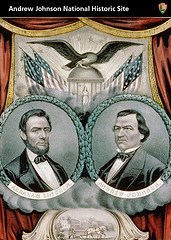
Campaign Poster NPS Lincoln and JohnsonReuniting North and South Abraham Lincoln and Andrew Johnson were elected President and Vice-President in 1864.This previously unheard of combination-a Republican and Democrat running together on the same ticket-was called the National Union Party. It represented both the North and South and symbolically reunited the two sides of the country after the Civil War. 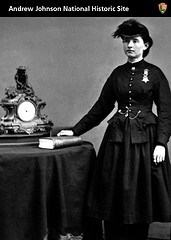
NPS Earning the Medal of Honor
|
Last updated: December 15, 2017

